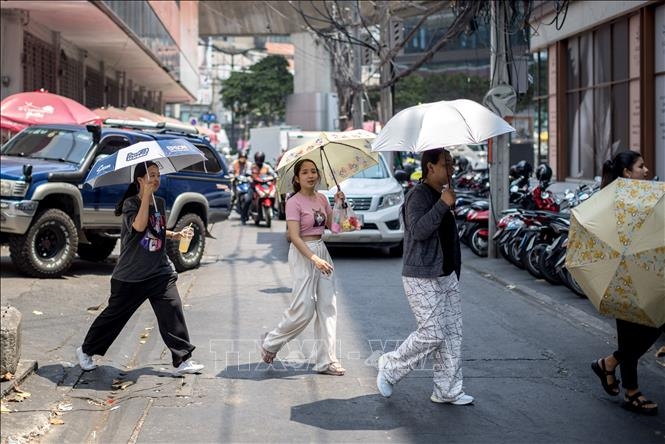
People use umbrellas to block the sun while moving on the street in Bangkok, Thailand.
Scorching heat sweeps through many areas
Heatwave conditions have gripped much of South and Southeast Asia, with areas such as Chauk in Myanmar and the Philippine capital Manila recording record high temperatures in recent days.
In Thailand, officials have warned of the dangers of severe heat, while authorities in Cambodia, Myanmar, Vietnam, India and Bangladesh have all predicted temperatures to exceed 40 degrees Celsius.
The Philippines and Bangladesh have suspended in-person classes, while India is considering whether the heat will affect voter turnout in national elections.
Even northern Japan has been affected by the heatwave. Temperatures in Sapporo, Japan, surpassed 25 degrees Celsius in April – the earliest on record.
Causes of severe heat
The months before the rainy or monsoon season are typically hot in Asia, but temperatures in 2024 at this time were much higher than average in many countries.
Experts say climate change is causing more frequent, intense and longer heat waves.
Asia is also warming faster than the global average, according to the World Meteorological Organization, a United Nations agency.
Dr Milton Speer, a meteorologist and visiting researcher at the University of Technology Sydney, said the El Nino phenomenon played a major role in causing the 2024 heatwave.
“The lack of cloud cover during El Niño means that average temperatures are likely to be higher. Sea surface temperatures in the region are currently several degrees Celsius higher than normal, causing temperatures to rise above the land average overnight. So daytime temperatures also rise from higher levels,” Speer explained.
There are also other factors contributing to this unusual heatwave, including deforestation, which reduces shade and increases dry surface areas, and the urban heat island effect, where concrete, glass and steel structures absorb rather than reflect heat.
People vulnerable to heat
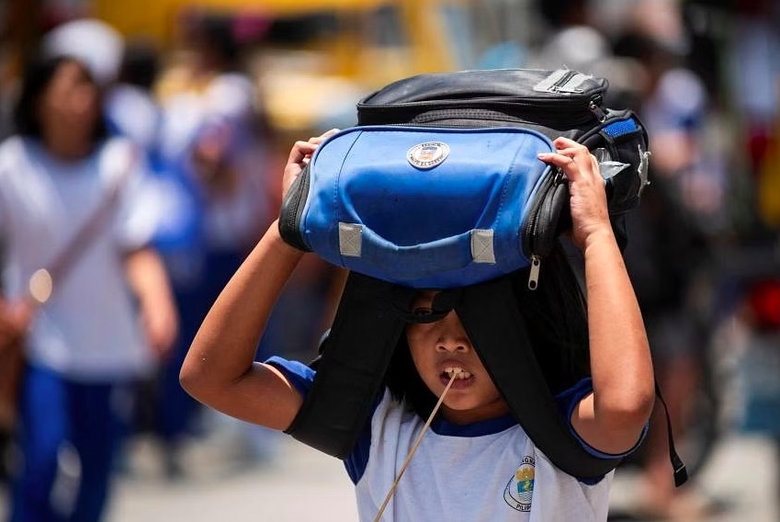
Asia is warming faster than the global average.
Record high temperatures disproportionately affect children, the elderly and people living in poverty.
Children, older adults, people with underlying medical conditions, or people with disabilities are all at higher risk of heat stroke.
People living in poverty also lack cooling solutions at home or are forced to work in conditions with inadequate protection from the heat.
This month, the United Nations Children's Fund Unicef warned that 243 million children across the Pacific and East Asia were at risk from heat waves.
Children exposed to heat waves can develop heatstroke, said Salwa Aleryani, a health expert with Unicef's East Asia and Pacific regional office.
“Serious problems can occur, such as cardiovascular disease, organ failure, muscle and nerve dysfunction,” she told AFP.
Response of countries

People use umbrellas to avoid the heat in Bangkok, Thailand, April 1, 2024.
Authorities in several countries have asked citizens to stay home. Hospitals in Nepal have been put on standby, while Cambodian officials have asked public schools to open all doors and windows for ventilation.
Bangladesh and the Philippines have imposed even stronger measures, with schools ordered to close for days.
The Philippine Department of Education has ordered public schools to cancel in-person classes on April 29 and 30 due to the heat. “We have received reports of high blood pressure, dizziness and fainting among students and teachers in the past few days,” said Benjo Basas, president of the Philippine Teachers’ Dignity Alliance.
But Ms Aleryani warned that many children do not even have the benefit of staying cool at home. They may also be left unsupervised by parents who cannot afford to stay home from work, and their education is also at risk of being severely disrupted.
In Singapore, the meteorological agency said temperatures in 2024 could be higher than last year, the fourth-warmest year since records began in 1929. Since last month, some schools have relaxed their uniform rules, allowing students to wear more comfortable gym clothes amid the persistent heat.
How long will the heat last?
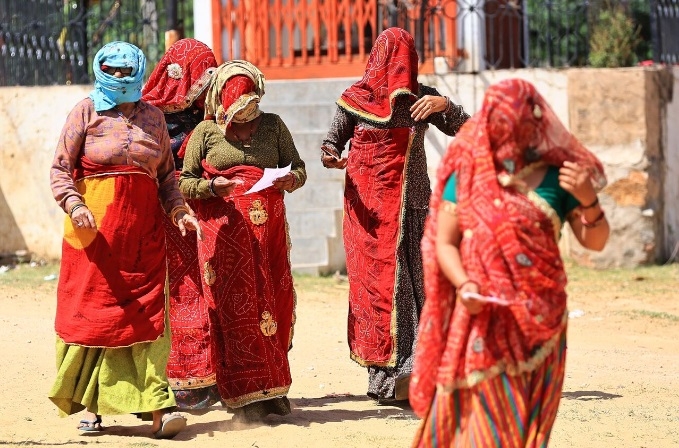
Indian voters go to the polls in hot weather.
The heatwave in Bangladesh is not expected to ease until May 2 at the earliest.
Meanwhile in Thailand, meteorologists warn the annual rainy season could arrive in late May, several weeks later than usual.
Dr Speer said the overall warming trend would continue even as the regional monsoon brought cooler temperatures.
“Heatwaves will continue to occur more frequently as the oceans and atmosphere continue to warm due to global warming,” he said.
That in turn poses an increased risk to crops and livestock, as well as outdoor workers.
Dr Speer said heat adaptation was important, including providing sustainable, air-conditioned residential structures where people could come in during the day and sleep at night.
Source


![[Photo] Third meeting of the Organizing Subcommittee serving the 14th National Party Congress](https://vstatic.vietnam.vn/vietnam/resource/IMAGE/2025/4/2/3f342a185e714df58aad8c0fc08e4af2)



![[Photo] General Secretary To Lam receives Russian Ambassador to Vietnam](https://vstatic.vietnam.vn/vietnam/resource/IMAGE/2025/4/2/b486192404d54058b15165174ea36c4e)

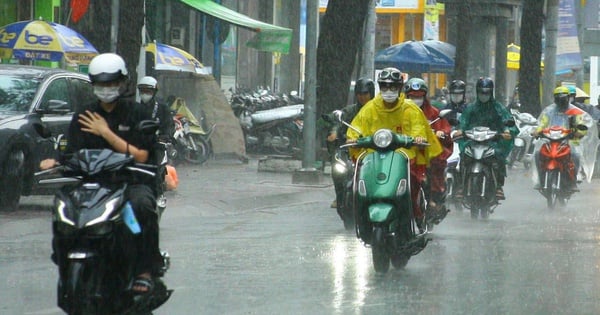






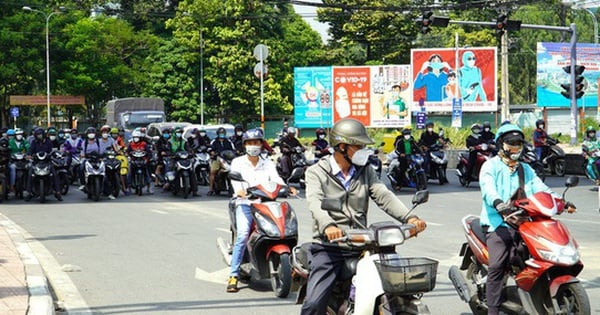
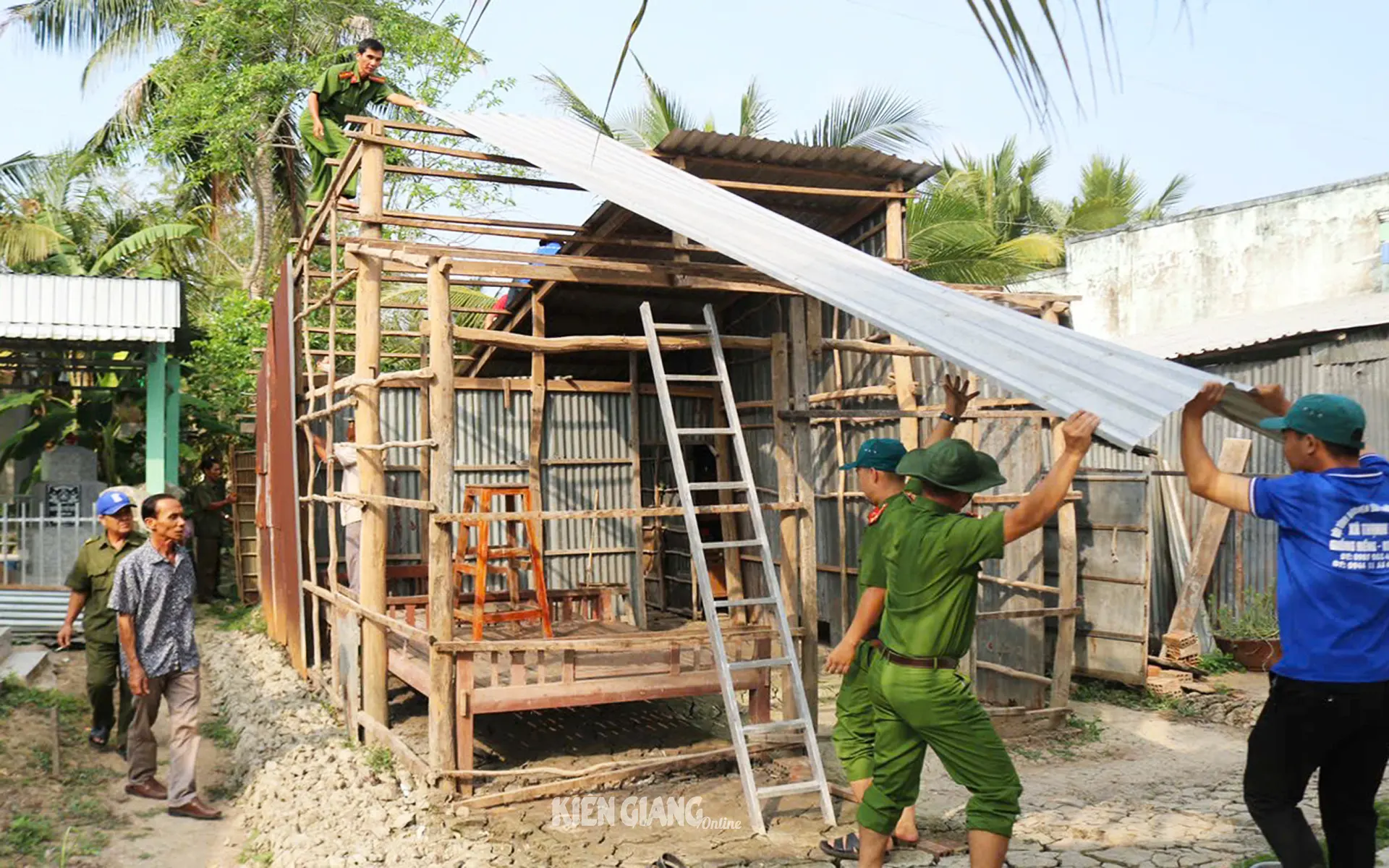
![[Podcast] News April 2, 2025](https://vstatic.vietnam.vn/vietnam/resource/IMAGE/2025/4/2/eaa5bcbdb47a439bb7c43a417033535c)
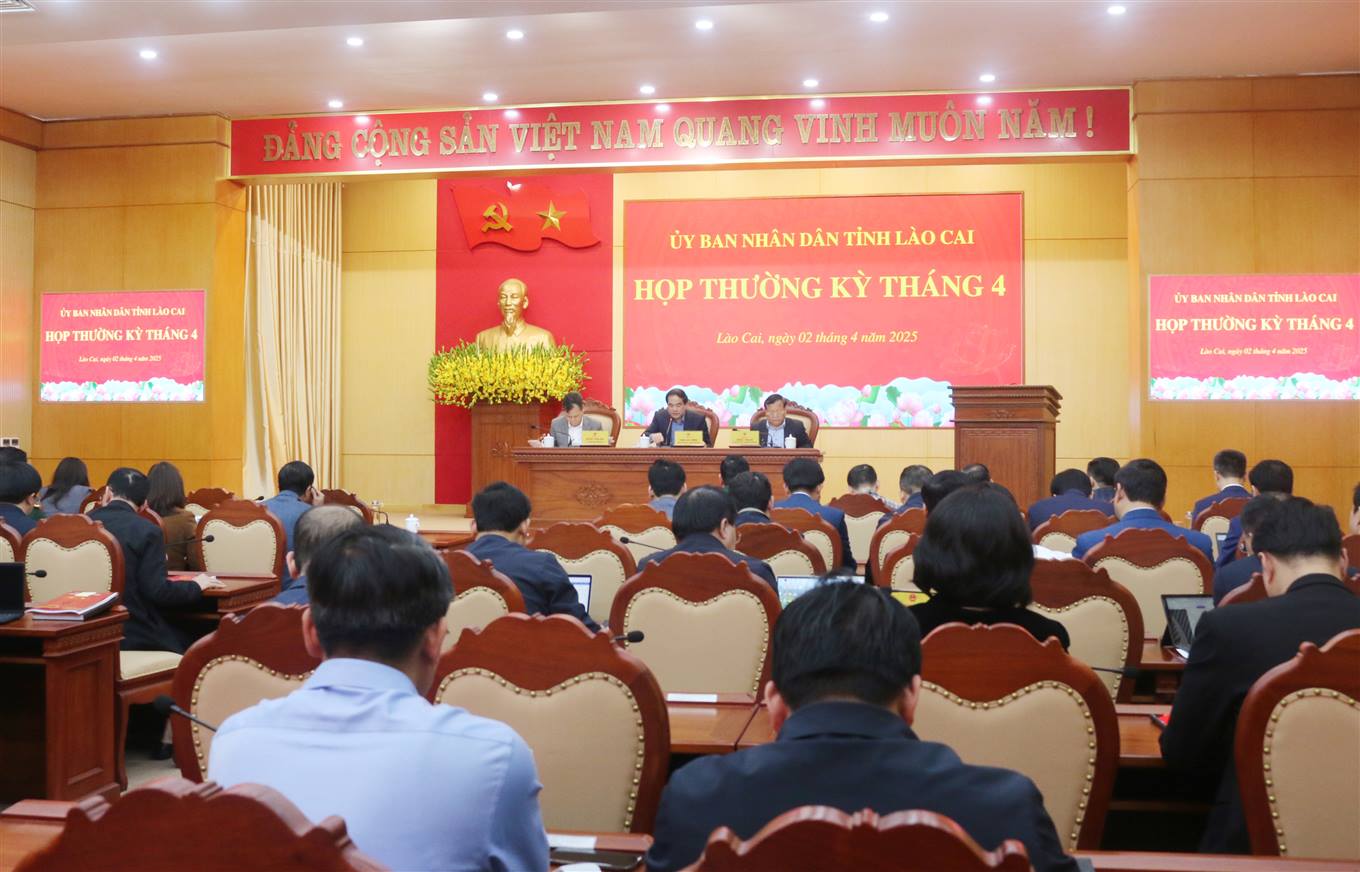









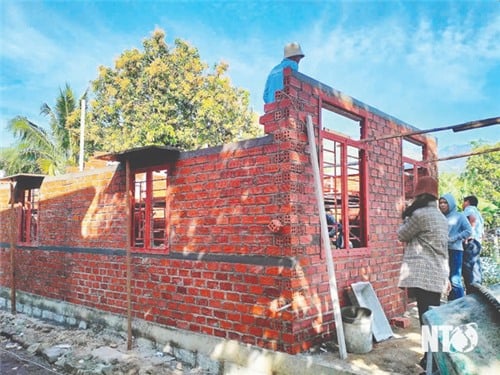


![[Photo] Relatives of victims of the earthquake in Myanmar were moved and grateful to the rescue team of the Vietnamese Ministry of National Defense.](https://vstatic.vietnam.vn/vietnam/resource/IMAGE/2025/4/2/aa6a37e9b59543dfb0ddc7f44162a7a7)














































![[Infographic] How does the State Bank of Region 12, including the Southeast provinces, operate?](https://vstatic.vietnam.vn/vietnam/resource/IMAGE/2025/4/2/91d2fdb1645c450a90c10104437b775b)













Comment (0)